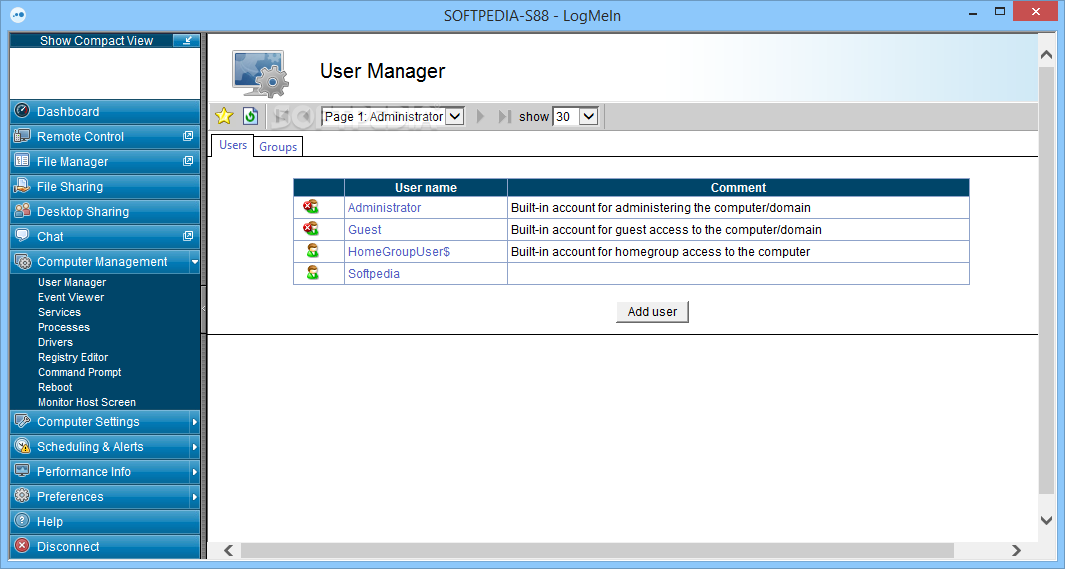

To start using ISL Online tools, one only needs to sign up for a non-obligatory and fully functional trial at. There is also a possibility of purchasing a package of minutes in a pay-per-use coupon in order to cover the rush hour.Įasy Start and Fully Functional Free Trial

If the business grows, the company can add additional licenses at any time. The SaaS license includes all upgrades and updates, including mobile apps. For instance, a user connects to a remote computer and after he closes the connection, he or any other user of the same license can establish a new remote connection. A company that purchases one license can create an unlimited number of users within the company, which can access an unlimited number of computers from an unlimited number of workstations (computers, mobile devices) as long as they run one remote session at a time.

One license means one simultaneous connection. ISL Online is priced per active connection and sets no other limits. “We believe in transparent pricing with no hidden costs and setting clear limits,” Jure Pompe, CEO at ISL Online, outlines the company’s pricing structure. Purchasing one license a company can offer its customers an integral online communication and support service.
LOGMEIN PRO UAC ANDROID
ISL Online offers an all-inclusive suite, which includes tools for remote access (alternative to LogMeIn Pro), remote support (LogMeIn Rescue), live chat (BoldChat), web conferencing () and mobile applications for iOS and Android devices. Interested individuals or companies can start a fully functional free trial, ask for a demo or contact ISL Online team through their live chat. Besides the reputable names such as Konica Minolta, Swiss Post, Canon, Idexx and others, the majority of ISL Online’s users are small and medium businesses.

Founded in 2001 and based in Europe, ISL Online has a profound experience in developing remote desktop technologies.
LOGMEIN PRO UAC SOFTWARE
The proper way: LAPS is the legacy way to manage local admin accounts on enterprise networks.LogMeIn’s short notice (21st January 2014, LogMeIn Official Blog) has affected a large number of their free account users while for home users almost any alternative might work, small businesses using the software professionally will have to find an equally or more secure and trustworthy alternative product. There’s no useful feedback on Intune for when scripts are deployed and executed, but fail to do what was intended, so if it goes wrong on a client you’ll probably never know without these logs. And keep a secure file for admins with a history of local admin passwords.
LOGMEIN PRO UAC PASSWORD
If you do either of these options, write a log file somewhere on the local drive that gives you a reference for the last iteration of the admin password was last successfully deployed to that device. But it's not the intended purpose so there isn't much out there, I would assume it isn't much more secure than just a powershell script over Intune. The deployment of apps are encrypted end to end and would probably be more difficult or impossible for a power user to access if it’s run in a system context. You can also deploy a powershell script as a win32 app. A power user may not have much trouble capturing it unless the endpoints are locked down pretty good though. One thing people do is delete the log file after a script is run. Ī lazy/insecure way to manage local admin accounts: You can manage local admin accounts by using powershell scripts, but scripts are stored in plain text in intune log files on the endpoint device that by default non-admins can read. But if the device ever stops communicating with the domain or has issues where it may not recognize your AAD Admin rights, you still won’t be able help them without a local admin account. I never did it as GoToAssist is my backup service, but I’m 98% sure if you set up unattended access on your endpoints, that it will always be “running as a service” and you won’t need local admin. Then you can see UAC prompts and use your AAD credentials. You have to run it as a service first, which requires a local admin account.


 0 kommentar(er)
0 kommentar(er)
